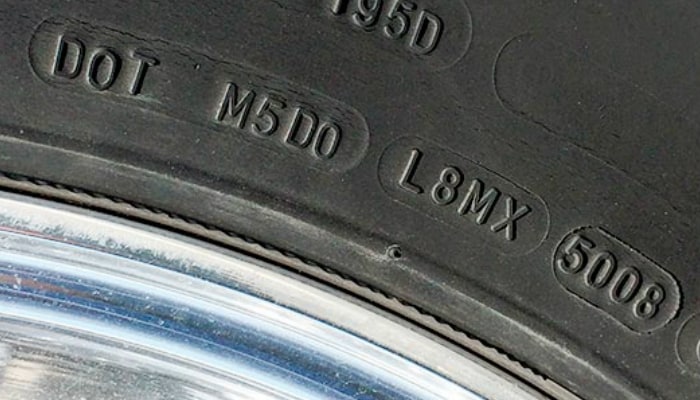Most meticulous vehicle owners will do anything to ensure that they will not experience sudden issues on the road. That is why questions about the lifespan of different automobile components are quite popular on the web. Here, we are going to focus on a certain component that will never go missing on any functioning vehicle. Stay with us as we gradually reveal the answers to the question, “How long do tires last?”
How Exactly Do Tires Age?
Tires are usually made of rubber. So, it is only appropriate to compare an old tire to an old rubber band. When you stretch a rubber band that has been existing for years, you would notice cracks. The same idea goes for tires that are kept for five to 10 years.
The cracks may appear all over the tire, even inside. Considering the thickness of tires, that is indeed a serious thing. Cracks are actually the cause of treads separating from tires by letting moisture in, corroding the metal belts.

Do not rely too much on high-quality tires made for higher mileage. Their special chemical compounds only push back the aging process. Eventually, time will dominate these high-mileage tires which makes them similar to ordinary tires. Aside from aging, cracks emerge when the tires are constantly exposed to intense heat.
How Long Do Tires Last?
Finally, it is time to discuss the lifespan of most tires. In some cases based on mileage, a yearly range of 12,000-15,000 miles leads to tire treads that can last for three to four years. However, that is only the general idea.

The lifespan of a certain tire still depends on its manufacturer. For example, automobile manufacturers such as Mercedes-Benz and Nissan recommend their clients to get new tires every six years. Meanwhile, tire manufacturers like Michelin and Continental guarantee that their products can last for a decade as long as proper maintenance is followed. Even the Rubber Manufacturers Association has something to say about the lifespan of tires. It claims that there is no exact expiration date because heavy use, improper storage techniques and intense heat affect the tire’s longevity.
What Makes Tires Age Horribly?
We already mentioned that usage, storage and heat are factors that determine how long a tire lasts. Let’s discuss these ideas even more:
Usage
To prolong the life of tires, these essential components should be properly inflated. Always make sure to maintain the recommended air pressure. You should also avoid hitting curbs for the impact directly affects the tire. If a tire has already been repaired due to puncture, be extra careful when you use it again. Lastly, as part of maintenance, rotate your tires on a regular basis and inspect them as often as possible.

Storage
How do you store your spare tires? Some truck owners put their spare tire underneath their vehicle for convenience. However, they also expose the tire to dirt and other elements that can damage rubber.
It is definitely cleaner to put a spare tire in the trunk. But this time, the tire will suffer from intense heat.
Convenience is the main reason why vehicle owners always bring a spare tire. After all, anything can happen on the road. However, if you really want to store your tires properly, the best way is to put them in your garage. This slows the aging process.
Heat
We have bad news for people living in warm climates. A study concludes that tires in hot areas age faster. You know what’s worse? Warm coastal places. Sunlight and salty air are a lethal combination for tires. Besides, it is hotter in areas near the sea.

How Can We Identify the Tire’s Age?
Now that you are knowledgeable about the factors affecting tire quality, you are probably concerned right now if some aforementioned instances have matched your current situation. Don’t worry for we will teach you how to determine the age of every tire you have. By knowing relevant techniques, you will find it easier to monitor the aging process of your tires.
Honestly speaking, it is super fun to decipher the age of your tires. It feels like solving a puzzle. The first thing you need to do is check the tire’s sidewall for codes indicated on the surface. Then, look for the last four digits of the Department of Transportation (DOT) code. These figures represent the tire’s manufacturing date.

Before we go any further, we would like to point out first that the following steps are more applicable for tires manufactured after the year 2000. Now that we are clear about that, the initial step is to focus on the first two numbers. These figures represent the week. Meanwhile, the last two numbers indicate the year. For example, if the last four numbers of the code are 5008, it means the tire was made in the 50th week of the year 2008. That’s it! Easy, right?
You should know that the manufacturing code is not always found on the tire’s outer side. Some codes are indicated on the inner side. This means extra effort for you still have to jack your vehicle up just to find it.
Why Should We Maintain Tires?
All automobile owners are encouraged to check their tires from time to time because safety should be their number one priority. To give you an initial idea, old treads can actually be separated from tires in just a snap. The result will be an unstable moving vehicle, possibly hitting everything in its path.
Another common example of the fatality of aging tires is head-on collision when the vehicle speeds up nonstop. The driver will find it hard to control his vehicle when he finally steps on the brake or suddenly turns the steering wheel.
Summary
Even though some vehicle manufacturers recommend tire replacement for a specific number of years, the speed of deterioration still depends on your usage, storage techniques, and locale’s climate. It goes to show that a tire lasts longer if you properly take care of it.
To ensure that your car will be able to handle most road conditions, check out the best all-season tires!










